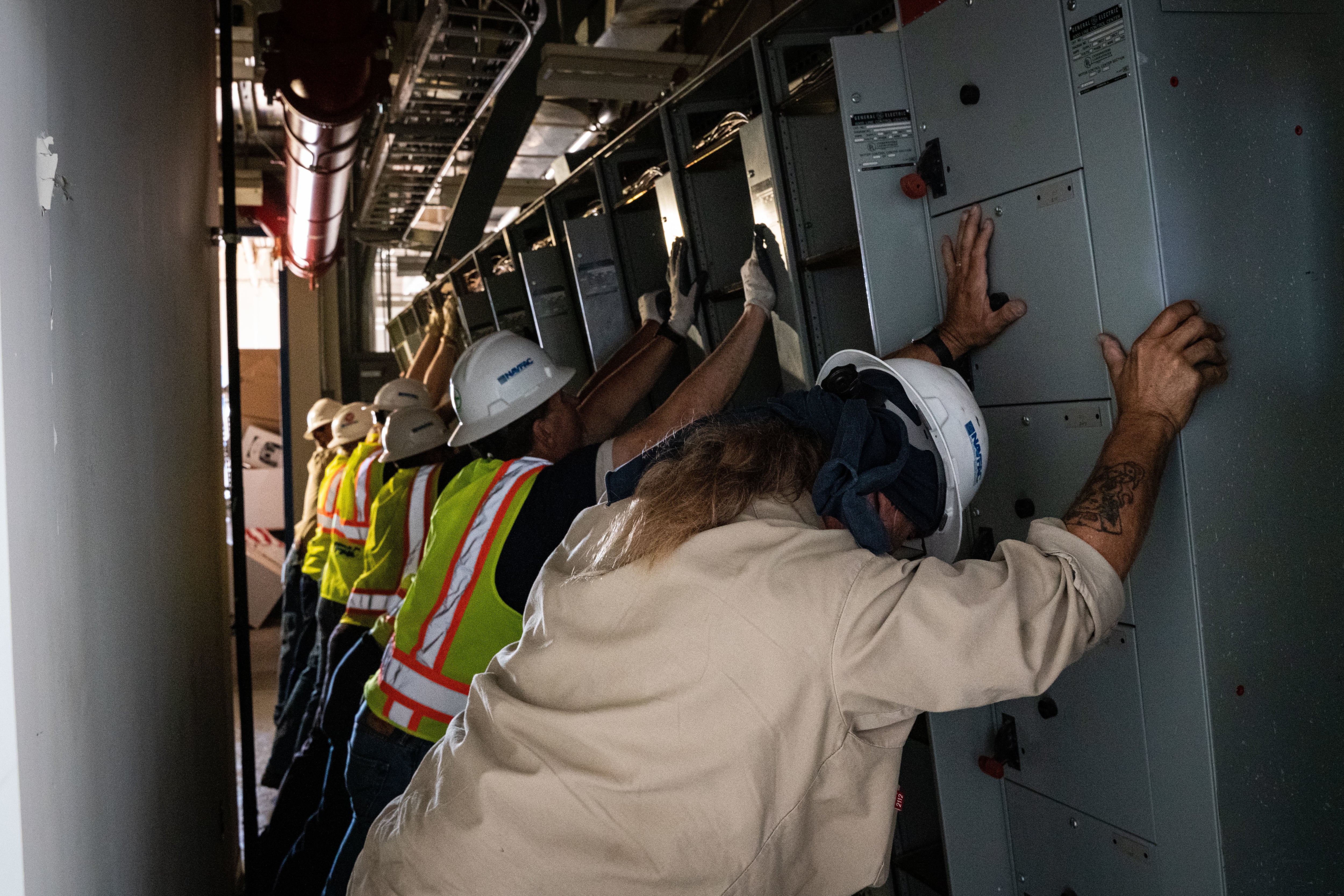Twin Independence Day weekend earthquakes and thousands of aftershocks rocked the California hamlet of Ridgecrest, buckling roads, igniting fractured natural gas lines and breaking home furnishing.
Those tremors didn’t spare Naval Air Weapons Station China Lake, a base that begins about three miles north of town and continues to sprawl over 1.1 million acres.
Within its nearly 1,200 facilities, researchers created and tested some of the world’s most advanced weapons — and then 6.4 and 7.1 magnitude quakes rippled through the Mojave Desert installation.
To get China Lake back to what officials call a mission capable status, taxpayers might need to spend $2 billion, according to a government report provided to Navy Times.
“There was damage to a majority of the buildings and infrastructure,” Capt. Mark K. Edelson, commanding officer of Naval Facilities Engineering Command Southwest, wrote in an email to Navy Times.
More than half of the buildings were erected before 1980, some during World War II, so many structures lacked “current seismic standards,” Edelson said.
In the wake of the quakes, Edelson said that about 20 percent of buildings are declared unsafe or now have use restriction. Many structures were damaged beyond “economical repair and require replacement,” he added.
To put the extent of China Lake’s damages into context, the Marines pegged the price to fix North Carolina’s Camp Lejeune in the wake of Hurricane Florence at $3.6 billion. It will run $420 million to rebuild portions of Offutt Air Force Base after this spring’s Missouri River flooding.

The report provided to Navy Times contains what Navy leaders say are still unofficial recommendations for new construction, but the estimated price tag is steep.
Projects likely to go unfinished until Fiscal Year 2021 could cost $1.7 billion — and that sum just covers the structures themselves.
“It is important to note this cost is a rough estimate for recovery of the facilities infrastructure only, and does not include specialized equipment, furniture, machine tools, telecommunications assets, consumables, or non-facilities costs” that were damaged during the earthquakes, Edelson said.
For example, China Lake’s Hangar 3 houses advanced weaponry and manned aircraft and it suffered “structural cracking throughout hangar spaces and Weapons System Software Activity spaces," the report said.
The quake sheared bolts off support beams. Stairwells suffered seismic joint failure and separation. Fixtures on the structure’s bracing snapped and bursting water pipes flooded the building.
The damage “renders Test Squadron non-mission capable" and the report urges the “relocation of Wing operations functions and personnel to other areas” and temporary facilities.
Replacing Hangar 3 alone is estimated to cost nearly $350 million.
Then there is the Michelson Laboratory. It houses Wing 8, a unit that tests advanced weapons technology.
The lab was declared unsafe due to column and beam stress, major cracks throughout the facility’s foundation and extensive damage to the facility’s equipment and offices.
Repairs are estimated to cost more than $270 million.
Additional hangars, as well as the base’s primary air traffic control tower, also must be replaced, according to the report.
The base’s propulsion lab — which features rocket components, guided missiles, free-fall weapons and other ordnance — revealed structural cracking, walls that bowed inward and dislodged heating, ventilation and air conditioning units.
“Loss of China Lake Propulsion Laboratories results in inability to support critical weapons" and the damage cripples "mission capability to Combustion Sciences, ordnance, propulsion, and explosives synthesis, mixing, and casting activities,” the report states.

More than 20 ammunition storage magazines are now “unsuitable for continued use” and no longer “able to withstand blast pressures," according to the report.
Aftershocks inflicted even more damage to the battered ammunition storage facilities, which support China Lake’s primary mission as an air weapons station.
Base utilities also suffered extensive damage and authorities estimate they need to fix 150 water valves, 180 electrical transformers and 400 electrical poles.
Wastewater lines and natural gas systems remained untested at the time of the Navy’s damage assessment report, but the report warned officials to “expect significant damage once normal operations of the base resume.”
Navy engineering crews and private contractors have toiled to bring the base back to an operational tempo.
On July 17, officials announced that all but seven of the 192 Public Private Venture houses had been cleared for occupancy, but nearly all non-essential personnel aboard China Lake were evacuated to Naval Base Ventura County and the threat of future tremors looms.
Despite the extensive damage, a major rebuilding project also could streamline operations at China Lake, so NAVFAC is putting together a plan for all that.
“Engineers have begun developing scopes of work for more extensive contracted work,” and “master planning has begun to ensure that any replacement facilities are considered as opportunities to consolidate missions of multiple buildings into more efficient single facilities and sited to make the most efficient use of space and utilities," Edelson said.
RELATED

J.D. Simkins is the executive editor of Military Times and Defense News, and a Marine Corps veteran of the Iraq War.





